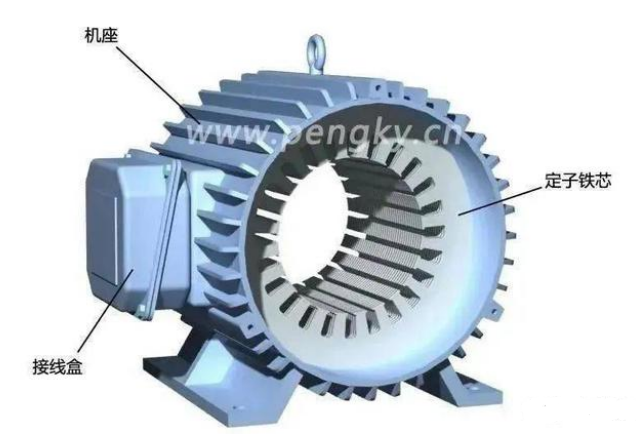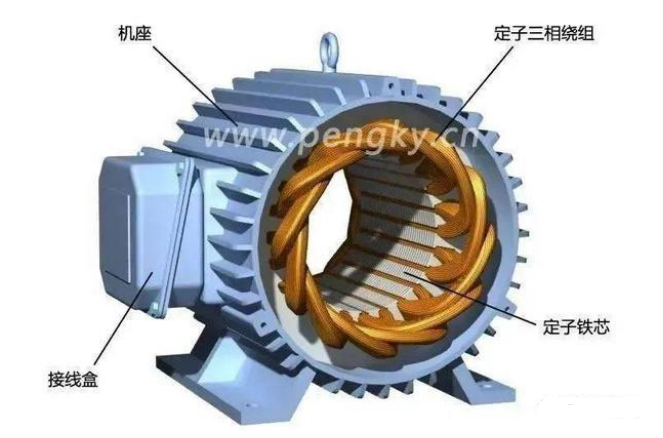The structure of permanent magnet synchronous motor
The structure of the permanent magnet synchronous motor is mainly composed of the following parts:
Permanent magnet (Permanent Magnet): Permanent magnets of permanent magnet synchronous motors usually use high-performance rare earth permanent magnet materials, such as neodymium iron boron magnets or cobalt iron boron magnets. The main function of the permanent magnet is to generate a constant magnetic field that interacts with the rotating magnetic field to drive the rotor to rotate.
Stator (Stat or ): The stator is the stationary part of the motor and consists of an iron core and windings. The winding of the stator is usually composed of several phase coils, and each coil contains several turns of wires to generate a rotating magnetic field.
Rotor: The rotor is the rotating part of the motor, usually consisting of an iron core and a short-circuit ring. The short-circuit ring in the rotor can introduce current into the iron core, thereby generating a rotating magnetic field, which interacts with the magnetic field of the stator to generate torque and drive the rotor to rotate.
Bearing: The bearing is used to support the rotor and stator of the motor to ensure the stable and reliable operation of the motor.
End Cover: The end cover is the shell of the motor, which is used to protect the various components inside the motor, and also facilitates the installation and maintenance of the motor.
Terminal Box ( Terminal Box): The terminal box is a part of the motor, which is used to connect the winding of the motor and the external power supply to realize the control and drive of the motor.
The stator structure and working principle of the permanent magnet synchronous motor are the same as that of the AC asynchronous motor, mostly in the form of 4 poles. Figure 1 is the stator core installed in the base, with 24 slots.

Figure 1 - Stator core and frame
The motor winding is arranged according to 3 phases and 4 poles, adopts single-layer chain winding, and energizes to generate 4 poles rotating magnetic field. Figure 2 is a schematic diagram of a stator with coil windings.

Figure 2 - Synchronous motor stator winding
The permanent magnet synchronous motor cannot be started directly through three-phase AC, because the rotor inertia is large, the magnetic field rotates too fast, and the stationary rotor cannot start to rotate with the magnetic field at all. The power supply of the permanent magnet synchronous motor is provided by a frequency converter. When starting, the output frequency of the frequency converter rises continuously from 0 to the working frequency, and the motor speed rises synchronously with the output frequency of the frequency converter. Changing the output frequency of the frequency converter can change the motor speed. It is a very good variable frequency speed regulating motor.
Permanent magnet synchronous motors are widely used as driving power in electric vehicles. Figure 10 is a photo on the Internet . It is the wheel side motor of BYD electric bus. It is a permanent magnet synchronous motor with a maximum power of 90kW. Permanent magnet synchronous motors have been used as traction motors in high-speed rail EMUs, with power above 600kW.



























 XINDA
XINDA